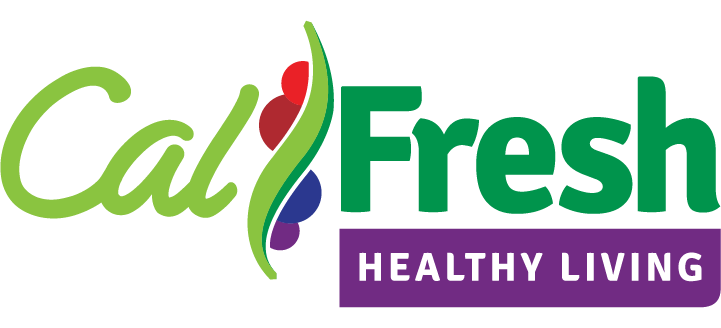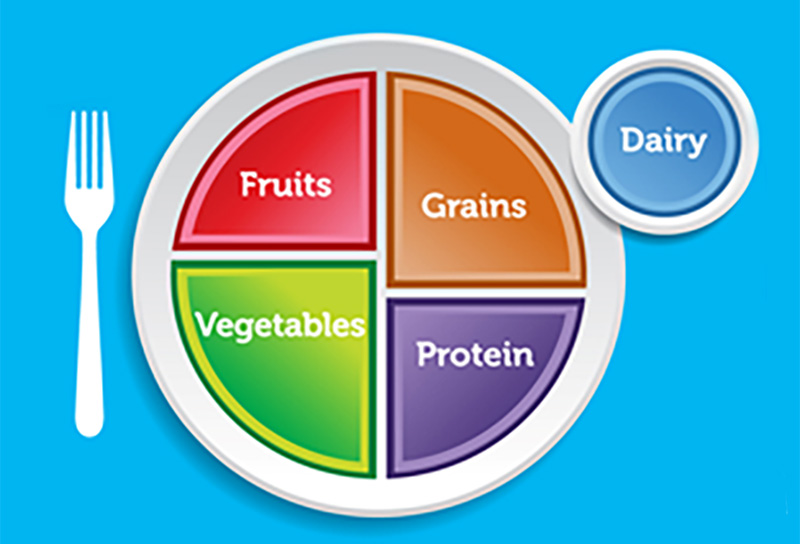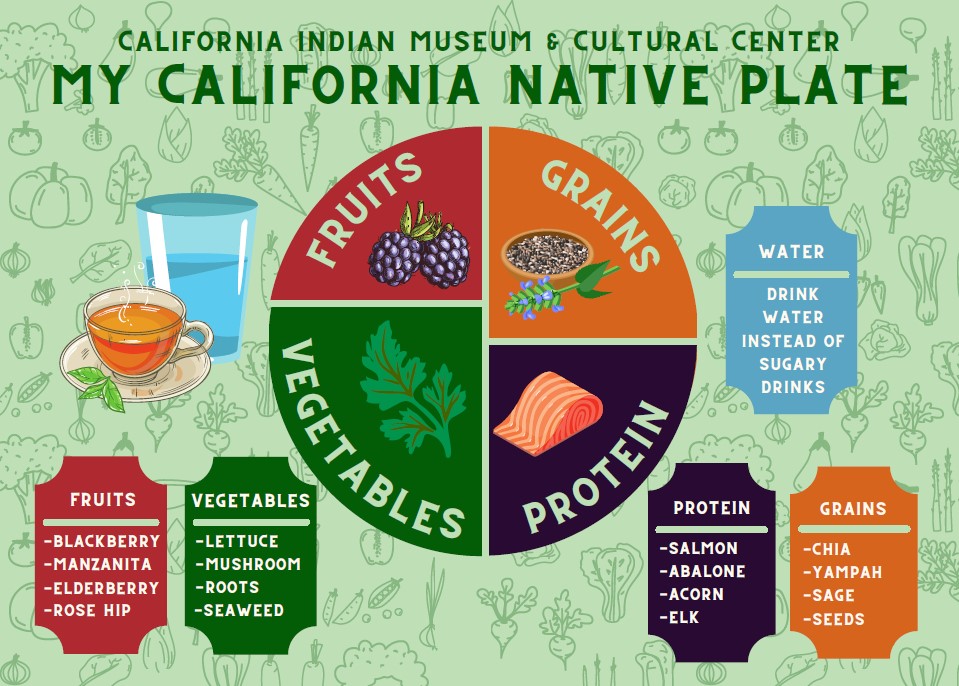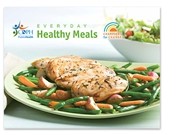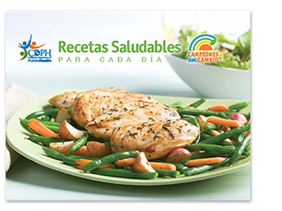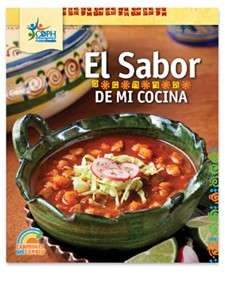
Healthy eating patterns support a healthy body weight and can help prevent and reduce the risk of chronic disease throughout periods of growth, development, and aging as well as during pregnancy.
MyPlate
MyPlate is a fun and easy nutrition guide to help incorporate the five food groups into your daily lifestyle. The five food groups represented on MyPlate are Fruits, Vegetables, Grains, Protein and Dairy. MyPlate is used to assist in building a healthier eating style by including foods from all five food groups.
MyPlate offers ideas and tips to help you create a healthier eating style that meets your individual needs and improves your health by offering simple messages that are easy to understand such as:
- Fill half your plate with fruits and vegetables
- Make at least half of your grains whole grains
- Switch to skim, 1% milk, or fat free milk
- Choose lower sodium foods
Everything you eat and drink matters. The right mix can help you become healthier now and in the future.
My California Native Plate
My California Native Plate is an adapted, more culturally relevant resource, for our Native and Indigenous peoples. It offers a visual representation of a nutrition guide to help incorporate Fruits, Vegetables, Grains, Protein, and Water into your daily lifestyle.
My California Native Plate offers ideas and tips to help you create a healthier eating style that meets your individual needs and improves your health by offering simple messages that are easy to understand such as:
- Fill half your plate with fruits and vegetables
- Make at least half of your grains whole grains
- Drink water instead of sugary drinks
- Choose lower sodium foods
Click Here For The Traditional Roots Cookbook
Traditional Roots CookbookFruits & Vegetables
Fruits and vegetables are some of the healthiest and best tasting foods. They are low in sodium and calories, and most are fat free. Reach for blue, purple, green, white, yellow, orange, and red fruits and vegetables for your meals and snacks. They help your body get the vitamins, minerals, fiber, and other natural substances it needs to stay healthy.
Cultivate a Healthy Lifestyle
Explore the healthy lifestyle tips to put you and your family on a path to better health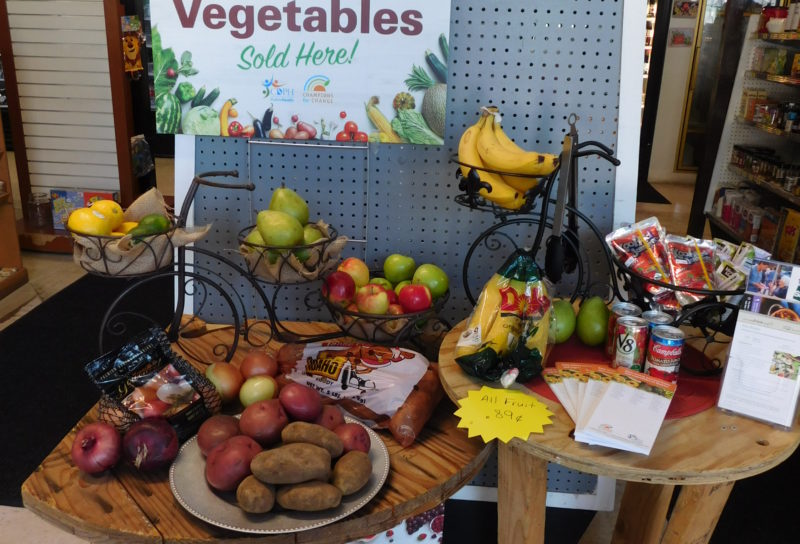
Click the above image to enlarge.
Ideas to Eat Smart
Eating healthy can be fun and easy if you have recipes and tips like those below. Enjoying family meals at home does not have to be difficult. With a little planning and grocery shopping, fixing meals at home can be easy. Use the resources below to get started.
Click here to contact us to request your free cookbook, or download the digital version below.
